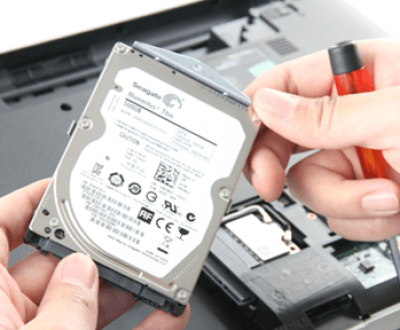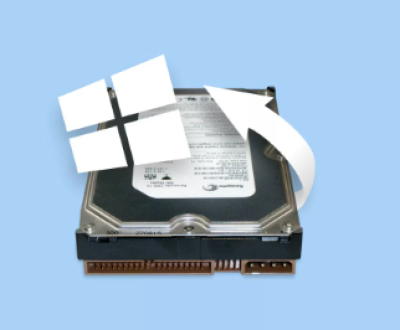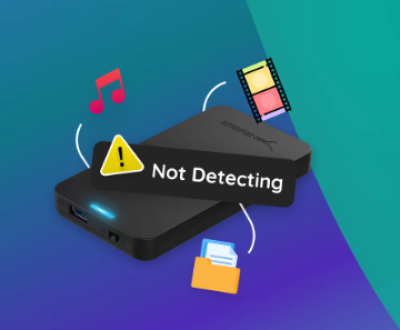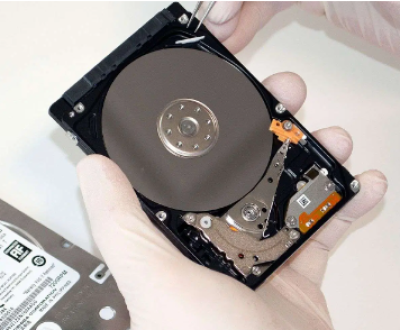Common Causes of SD Card Formatting
Accidental Operation: Users may accidentally select the “Format” option when managing files on the SD card, for example, when quickly trying to access a file or folder and making a wrong click in the context menu.
System Error: Sometimes, the operating system may encounter errors that lead to incorrect recognition of the SD card, prompting the user to format it to solve the problem. In fact, the problem may not be solved after formatting.
Virus or Malware Infection: Viruses or malware can attack the SD card, corrupting its file system. In some cases, the only way to remove the virus or malware is to format the SD card.

SD Card Damage: Physical damage to the SD card, such as being bent, dropped into water, or suffering from electronic component failure, may cause errors in the file system. Formatting is sometimes seen as a possible solution to make the SD card usable again.
Principles of Data Recovery from SD Cards
How Data is Stored on SD Cards: SD cards use flash memory to store data. Data is written to specific memory cells in the form of binary code. When a file is saved, the SD card’s file system records the file’s metadata, such as the file name, size, creation time, and the location of the data on the storage medium.
What Happens During Formatting: When an SD card is formatted, the file system on the card is usually rewritten. The operating system clears the file allocation table and other metadata that records the location of files, making the computer think that the SD card is empty. However, the actual data still remains on the storage medium until it is overwritten by new data.
The Principle of Data Recovery: Data recovery software works by scanning the SD card’s storage space to find and analyze the remaining data fragments. It attempts to reconstruct the file system structure based on the characteristics and rules of the file system and finds the original data according to the recovered metadata.
Precautions Before Recovery
Stop Using the SD Card Immediately: After realizing that the SD card has been formatted, it is crucial to stop using it immediately. Any new data written to the card may overwrite the original data that needs to be recovered, reducing the chances of successful recovery.
Avoid Physical Damage: Do not attempt to disassemble the SD card or expose it to extreme temperatures, moisture, or magnetic fields. Physical damage to the SD card can cause more severe data loss and make recovery more difficult or even impossible.
Backup Recovered Data: After successfully recovering the data, it is recommended to immediately back up the recovered files to another storage device, such as a hard drive or cloud storage. This prevents data loss due to further problems with the SD card or other unforeseen circumstances.
Data Recovery Methods for SD Cards
Recovery with Professional Data Recovery Software
Popular Data Recovery Software:
Panda Assistant is an advanced data recovery software designed to help users retrieve lost files quickly and efficiently. With its intuitive interface and powerful recovery algorithms, Panda Assistant provides a seamless solution for recovering data from hard drives, SSDs, USB flash drives, memory cards, and more.
Key Features of Panda Assistant
Comprehensive File Recovery – Retrieve deleted documents, photos, videos, emails, and other essential files from a variety of storage devices.
Deep Scan Technology – Uses advanced scanning algorithms to locate even the most deeply buried lost files.
Quick & Easy to Use – With a user-friendly interface, even non-technical users can navigate the recovery process with ease.
Supports Multiple File Systems – Compatible with NTFS, FAT32. exFAT, and other popular file formats.
Preview Before Recovery – Allows users to preview files before restoring them, ensuring accuracy.
Safe and Secure – Read-only recovery ensures that no further damage is done to the lost data.
General Steps for Recovery with Software:
Download and Install the Software: Visit the official website of the data recovery software and download the appropriate version for your operating system. Follow the installation wizard to complete the installation.
Connect the SD Card: Insert the SD card into a card reader and connect it to your computer. Make sure the computer can recognize the SD card.
Launch the Recovery Software: Open the data recovery software. Some software may require you to register or activate before use.
Select the SD Card: In the software interface, select the SD card as the target device for recovery. The software will usually display a list of available storage devices.
Choose the Recovery Mode: Most data recovery software offers different recovery modes, such as “Quick Scan” and “Deep Scan”. The “Quick Scan” mode is faster but may not find all lost files. The “Deep Scan” mode takes longer but is more likely to recover all available data.
Start the Scan: Click the “Scan” button to start the scanning process. The software will read the data on the SD card and analyze it to find recoverable files.
Preview and Recover: After the scan is complete, the software will display a list of recovered files. You can usually preview the files to confirm whether they are the ones you need. Select the files you want to recover and specify a save location on your computer to save the recovered data.
Recovery Using Command Prompt (for Advanced Users)
Basic Concepts of Command Prompt: The Command Prompt is a command-line interface in Windows and some other operating systems. It allows users to interact with the computer system by entering commands. In the context of SD card data recovery, certain commands can be used to access and manipulate the SD card’s file system.
Steps for Recovery Using Command Prompt:
Open the Command Prompt: Press the Windows key + R on your keyboard to open the “Run” dialog box. Type “cmd” and press Enter to open the Command Prompt.
Identify the SD Card Drive Letter: In the Command Prompt, type “diskpart” and press Enter. This will open the DiskPart utility. Then type “list disk” to display a list of all disks connected to the computer. Identify the SD card by its size and other characteristics. Note down the disk number of the SD card.
Select the SD Card: Type “select disk [disk number]” (replace [disk number] with the actual disk number of the SD card) and press Enter.
Clean the SD Card: Type “clean” and press Enter. This command will clean the SD card, removing all partitions and file systems. Be careful when using this command as it will erase all data on the SD card.
Create a New Partition: Type “create partition primary” and press Enter to create a new primary partition on the SD card.
Format the Partition: Type “format fs=fat32” (or other file systems such as NTFS if needed) and press Enter to format the new partition.
Assign a Drive Letter: Type “assign” and press Enter to assign a drive letter to the SD card.
Exit DiskPart: Type “exit” and press Enter to exit the DiskPart utility.
Professional Data Recovery Services
When to Consider Professional Services:
Severe Physical Damage: If the SD card has suffered severe physical damage, such as a broken circuit board or damaged memory cells, it is very difficult for ordinary users to recover the data. Professional data recovery companies have specialized equipment and technical personnel who can handle such situations.
Failed Software Recovery: If data recovery software fails to recover the desired data, especially when dealing with important and valuable data, it is advisable to consider professional data recovery services. Professional technicians have more advanced tools and techniques to handle complex data loss situations.
High Security and Confidentiality Requirements: For data that requires high security and confidentiality, such as corporate confidential data or personal sensitive information, professional data recovery companies usually have strict security and confidentiality measures to ensure the security of the data.
How to Choose a Professional Data Recovery Service Provider:
Reputation and Experience: Look for companies with a good reputation and extensive experience in the data recovery industry. You can read online reviews, ask for recommendations from friends or colleagues, or check the company’s website for customer testimonials.
Certifications and Qualifications: Ensure that the data recovery service provider has the necessary certifications and qualifications, such as ISO 9001 certification for quality management systems or certifications from professional data recovery organizations.
Services and Guarantees: Inquire about the specific services offered by the company, including the types of storage devices they can recover data from and the success rate of their recoveries. Also, check if they offer any guarantees or warranties for their services.
Security and Confidentiality Measures: Ask about the company’s security and confidentiality measures, such as data encryption, access control, and secure storage facilities. Make sure they have strict procedures in place to protect your data.
Preventing Future Data Loss
Regular Data Backup: Set up a regular backup schedule to copy the data on your SD card to another storage device, such as a hard drive or cloud storage. This way, even if the SD card is lost, damaged, or formatted accidentally, you can easily restore the data from the backup.
Use Write-Protection: Some SD cards have a write-protect switch. Enable this switch when you do not need to write data to the SD card to prevent accidental deletion or formatting.
Handle SD Cards with Care: Avoid physical damage to the SD card by handling it carefully. Do not bend, drop, or expose it to extreme conditions. When inserting or removing the SD card from a device, make sure to do it gently and in the correct way.
Update Drivers and Software: Keep the drivers for your SD card reader and the operating system up to date. Outdated drivers or software may cause compatibility issues that could lead to data loss or SD card malfunctions.
Use Reliable Devices and Software: When using SD cards, choose reliable devices such as cameras, smartphones, and card readers. Also, use trusted software for file management and data storage to reduce the risk of data loss.
About us and this blog
Panda Assistant is built on the latest data recovery algorithms, ensuring that no file is too damaged, too lost, or too corrupted to be recovered.
Request a free quote
We believe that data recovery shouldn’t be a daunting task. That’s why we’ve designed Panda Assistant to be as easy to use as it is powerful. With a few clicks, you can initiate a scan, preview recoverable files, and restore your data all within a matter of minutes.
Subscribe to our newsletter!
More from our blog
See all postsRecent Posts
- How to recover data from portable hard drive 2025-07-10
- How to recover data from a broken hard drive 2025-07-10
- How do i recover files from a formatted hard drive 2025-07-10

 Try lt Free
Try lt Free Recovery success rate of up to
Recovery success rate of up to









